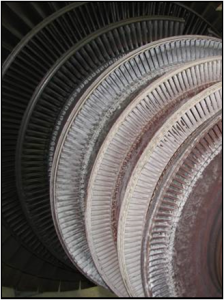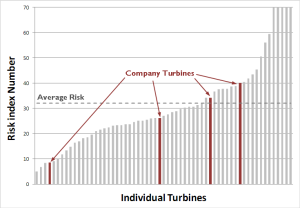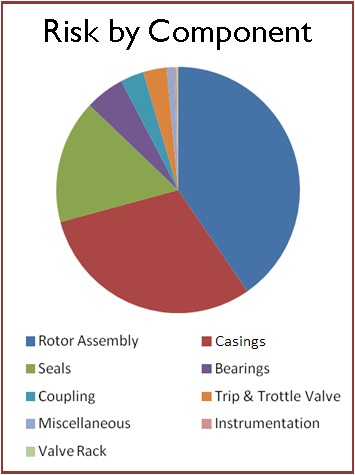
-
Extend time between outages
-
Help plan turnaround scopes
-
Improve equipment availability
-
Quantify risk of operating parameter changes
-
Reduce overall risk
-
Reduce financial risk
-
Decision-making by cost benefit ranking
M&M Engineering (now Acuren Inspection) partnered with The Hartford Steam Boiler Inspection and Insurance Company (HSB) and numerous rotating equipment experts in various industries (power generation, process (refinery, petrochemical, chemical products), forest products, manufacturing, and repair) to develop a risk assessment model for steam turbine-generators, known as STRAP, Steam Turbine Risk Assessment Program.
M&M Engineering, HSB, and industry team experience was leveraged to establish what attributes are both important and necessary for a unit to achieve a longer time period between major outages and corresponding lower risk levels. These attributes were converted into risk modifying factors to facilitate the viewing of turbine and generator risks on a holistic basis. These attributes include:
- Design and construction
- Operation
- Maintenance
- Monitoring
- Condition at past outages
- Steam Chemistry
The analyses of units of various makes and models were used to calibrate these factors. The resulting models and associated risk levels were then verified by comparison with similar units that have run longer intervals. The reliability and risk factors were developed from these attributes by drawing on the skills and experience of leaders in industry, M&M Engineering’s failure analysis and risk assessment experience, and HSB’s decades of experience as an insurer of these machines.

STRAP is the culmination of this synergy of experience and data. The program consists of algorithms that calculate risk (risk = probability of failure x consequence) for the steam turbine generator from the probabilities of failures, failure consequences, and engineering modifying factors included in the programs. These factors are applied to data acquired from questions that are answered for the specific turbine or generator. These questions include information regarding operations and maintenance, construction and design, monitoring, steam chemistry, upgrades and spares, etc. STRAP then calculates the risk of that specific unit.
STRAP was developed based on ASME’s Risk Based Inspection Guideline methodologies. STRAP has been the subject of technical papers and presentations at numerous conferences (ASME, API, EPRI, NUSIS, PowerGen, SAE, TAPPI, and Turbomachinery), three different insurance companies, and one OEM.
Analyses have been completed for over 350 steam turbines and 150 generators. These results reflect 21 turbine OEM’s and 12 generator OEM’s. The units ranged in size from 1300 HP to 890 MW with operating hours ranging from 8,000 to 340,000, and new to 62 years of operation. The turbines had 780 historical failures (failure is an event that caused lost production).
A STRAP evaluation can provide:

- Risk mitigation recommendations
- Risk Ranking and Benchmarking of equipment against industry and other company equipment
- Risk contribution ranked by equipment sub-components
- Risk ranked by failure modes
- Risk ranked by operating modes
- Risk ranked by extended operation beyond past overhaul intervals
Additional articles concerning the history of STRAP can be found by visiting STRAP – New Risk Based Analysis Tool.
For a Print Friendly brochure, click the link below.
STRAP Services Brochure
STRAP Services Brochure (Spanish)

